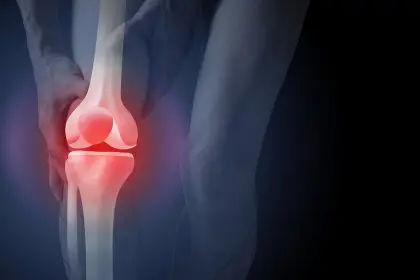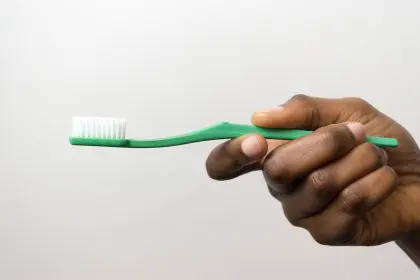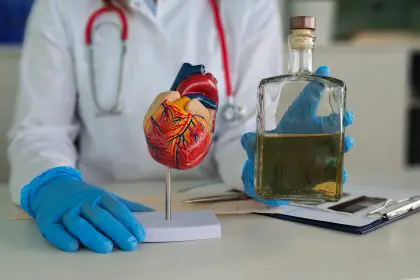Sarah Richards never imagined she’d end up struggling with pain medication. After a car accident left her with chronic back pain, prescription opioids seemed like a lifeline. Three months later, she found herself counting pills obsessively, anxious about running out before her next refill.
Her story echoes across America, where prescription pain medication dependency affects millions. Many begin taking these medications legitimately, unaware of how quickly dependency can develop.
The blurred line between need and dependency
Pain medications serve an essential medical purpose, helping people manage everything from post-surgical pain to chronic conditions. Yet the transition from proper use to dependency often happens so gradually that many don’t recognize the shift until they’re deeply affected.
1. Running out of medication too soon
The first warning sign often appears in pill counting. Someone might start taking an extra pill here and there, only to find themselves short before their next prescription. This pattern typically begins subtly but escalates over time.
2. Failed attempts to cut back
Many people recognize their increasing dependency and try to reduce their medication use. Unsuccessful attempts to cut back, accompanied by anxiety about reducing dosage, may signal a developing problem.
3. Mood changes between doses
A clear warning sign emerges when someone experiences significant mood shifts between doses. Irritability, anxiety, or depression might surface as the medication wears off, leading to a cycle of emotional highs and lows.
4. Physical symptoms without pills
The body sends clear signals when dependency develops. Missing a dose might trigger sweating, shaking, nausea, or sleep problems – signs that the body has adapted to the medication’s presence.
5. Impact on daily responsibilities
Work performance might slip. Family obligations could feel overwhelming. These changes often develop slowly, making them easy to dismiss or rationalize away.
6. Doctor shopping behavior
Seeking prescriptions from multiple healthcare providers or visiting different pharmacies to fill prescriptions represents a serious warning sign. This behavior often indicates losing control over medication use.
7. Social withdrawal and secrets
Hiding medication use from family and friends, making excuses for behavior changes, or withdrawing from social activities often accompanies developing dependency.
Understanding how dependency develops
Modern brain research reveals how pain medications can hijack natural reward systems. These changes explain why breaking free from dependency requires more than just willpower.
The role of chronic pain
Managing chronic pain complicates recovery. Many fear that giving up pain medication means living in constant discomfort. However, alternative pain management strategies often prove more effective long-term.
Breaking the silence
Shame and stigma often prevent people from seeking help. Yet medical professionals increasingly understand that dependency can develop even when taking medications as prescribed.
Treatment options bring hope
Modern treatment approaches offer numerous paths to recovery:
Medical supervision helps manage withdrawal safely Behavioral therapy addresses underlying issues Support groups provide community understanding Alternative pain management techniques offer new solutions
The family impact
Dependency affects entire families. Modern treatment programs often include family therapy and support services, recognizing that healing extends beyond the individual.
Prevention strategies
For those currently taking pain medication, several strategies help prevent dependency:
Following prescribed dosages exactly Keeping detailed records of use Discussing concerns openly with healthcare providers Exploring alternative pain management methods early
When someone needs help
Recognizing these warning signs in yourself or someone else requires courage.
Sarah Richards never imagined she’d end up struggling with pain medication. After a car accident left her with chronic back pain, prescription opioids seemed like a lifeline. Three months later, she found herself counting pills obsessively, anxious about running out before her next refill.
Her story echoes across America, where prescription pain medication dependency affects millions. Many begin taking these medications legitimately, unaware of how quickly dependency can develop.
The blurred line between need and dependency
Pain medications serve an essential medical purpose, helping people manage everything from post-surgical pain to chronic conditions. Yet the transition from proper use to dependency often happens so gradually that many don’t recognize the shift until they’re deeply affected.
1. Running out of medication too soon
The first warning sign often appears in pill counting. Someone might start taking an extra pill here and there, only to find themselves short before their next prescription. This pattern typically begins subtly but escalates over time.
2. Failed attempts to cut back
Many people recognize their increasing dependency and try to reduce their medication use. Unsuccessful attempts to cut back, accompanied by anxiety about reducing dosage, may signal a developing problem.
3. Mood changes between doses
A clear warning sign emerges when someone experiences significant mood shifts between doses. Irritability, anxiety, or depression might surface as the medication wears off, leading to a cycle of emotional highs and lows.
4. Physical symptoms without pills
The body sends clear signals when dependency develops. Missing a dose might trigger sweating, shaking, nausea, or sleep problems – signs that the body has adapted to the medication’s presence.
5. Impact on daily responsibilities
Work performance might slip. Family obligations could feel overwhelming. These changes often develop slowly, making them easy to dismiss or rationalize away.
6. Doctor shopping behavior
Seeking prescriptions from multiple healthcare providers or visiting different pharmacies to fill prescriptions represents a serious warning sign. This behavior often indicates losing control over medication use.
7. Social withdrawal and secrets
Hiding medication use from family and friends, making excuses for behavior changes, or withdrawing from social activities often accompanies developing dependency.
Understanding how dependency develops
Modern brain research reveals how pain medications can hijack natural reward systems. These changes explain why breaking free from dependency requires more than just willpower.
The role of chronic pain
Managing chronic pain complicates recovery. Many fear that giving up pain medication means living in constant discomfort. However, alternative pain management strategies often prove more effective long-term.
Breaking the silence
Shame and stigma often prevent people from seeking help. Yet medical professionals increasingly understand that dependency can develop even when taking medications as prescribed.
Treatment options bring hope
Modern treatment approaches offer numerous paths to recovery:
Medical supervision helps manage withdrawal safely Behavioral therapy addresses underlying issues Support groups provide community understanding Alternative pain management techniques offer new solutions
The family impact
Dependency affects entire families. Modern treatment programs often include family therapy and support services, recognizing that healing extends beyond the individual.
Prevention strategies
For those currently taking pain medication, several strategies help prevent dependency. Following prescribed dosages exactly, Keeping detailed records of use, Discussing concerns openly with healthcare providers, Exploring alternative pain management methods early
When someone needs help
Recognizing these warning signs in yourself or someone else requires courage. The next steps involve – Speaking with healthcare providers honestly, Exploring treatment options, Building a support network and Creating a clear action plan
Modern treatment approaches
Medically supervised detoxification ensures safety Cognitive behavioral therapy addresses underlying issues Holistic approaches include nutrition and exercise Alternative pain management techniques provide new tools
The role of support systems
Family involvement strengthens recovery Professional counseling provides guidance Support groups offer understanding Medical teams coordinate care
Finding the right help
Several factors influence treatment choices – Insurance coverage and costs Location and accessibility Program philosophy and approach Length of treatment needed
Hope for recovery
Sarah Richards found her way to recovery through a comprehensive treatment program. Today, she manages her pain through a combination of physical therapy, meditation, and non-addictive medications.
Long-term success strategies
Regular medical check-ups, Stress management techniques, Healthy lifestyle choices and Strong support network maintenance
Conclusion
Recognizing warning signs early can prevent dependency from taking control. Whether you’re concerned about your own medication use or worried about someone else, help is available. Modern treatment approaches offer numerous paths to recovery, with success stories proving that breaking free from pain medication dependency is absolutely possible.
Remember that seeking help isn’t a sign of weakness but of wisdom. Healthcare providers, addiction specialists, and support groups stand ready to help anyone ready to take the first step toward recovery.
Speaking with healthcare providers honestly Exploring treatment options Building a support network Creating a clear action plan
Modern treatment approaches
Medically supervised detoxification ensures safety Cognitive behavioral therapy addresses underlying issues Holistic approaches include nutrition and exercise Alternative pain management techniques provide new tools
The role of support systems
Family involvement strengthens recovery Professional counseling provides guidance Support groups offer understanding Medical teams coordinate care
Finding the right help
Insurance coverage and costs Location and accessibility Program philosophy and approach Length of treatment needed
Hope for recovery
Sarah Richards found her way to recovery through a comprehensive treatment program. Today, she manages her pain through a combination of physical therapy, meditation, and non-addictive medications.
Long-term success strategies
Regular medical check-ups Stress management techniques Healthy lifestyle choices Strong support network maintenance
Conclusion
Recognizing warning signs early can prevent dependency from taking control. Whether you’re concerned about your own medication use or worried about someone else, help is available. Modern treatment approaches offer numerous paths to recovery, with success stories proving that breaking free from pain medication dependency is absolutely possible.
Remember that seeking help isn’t a sign of weakness but of wisdom. Healthcare providers, addiction specialists, and support groups stand ready to help anyone ready to take the first step toward recovery.














